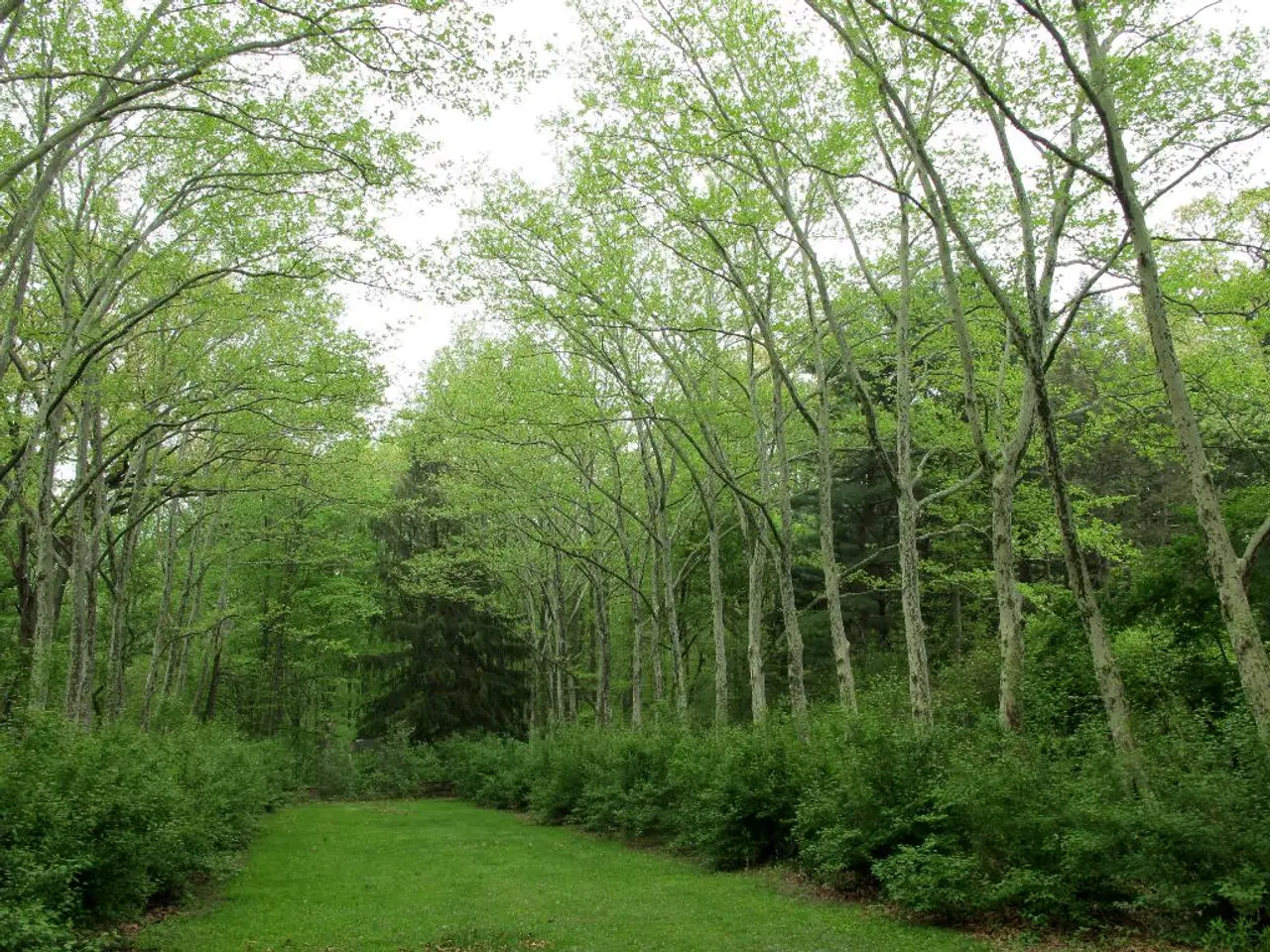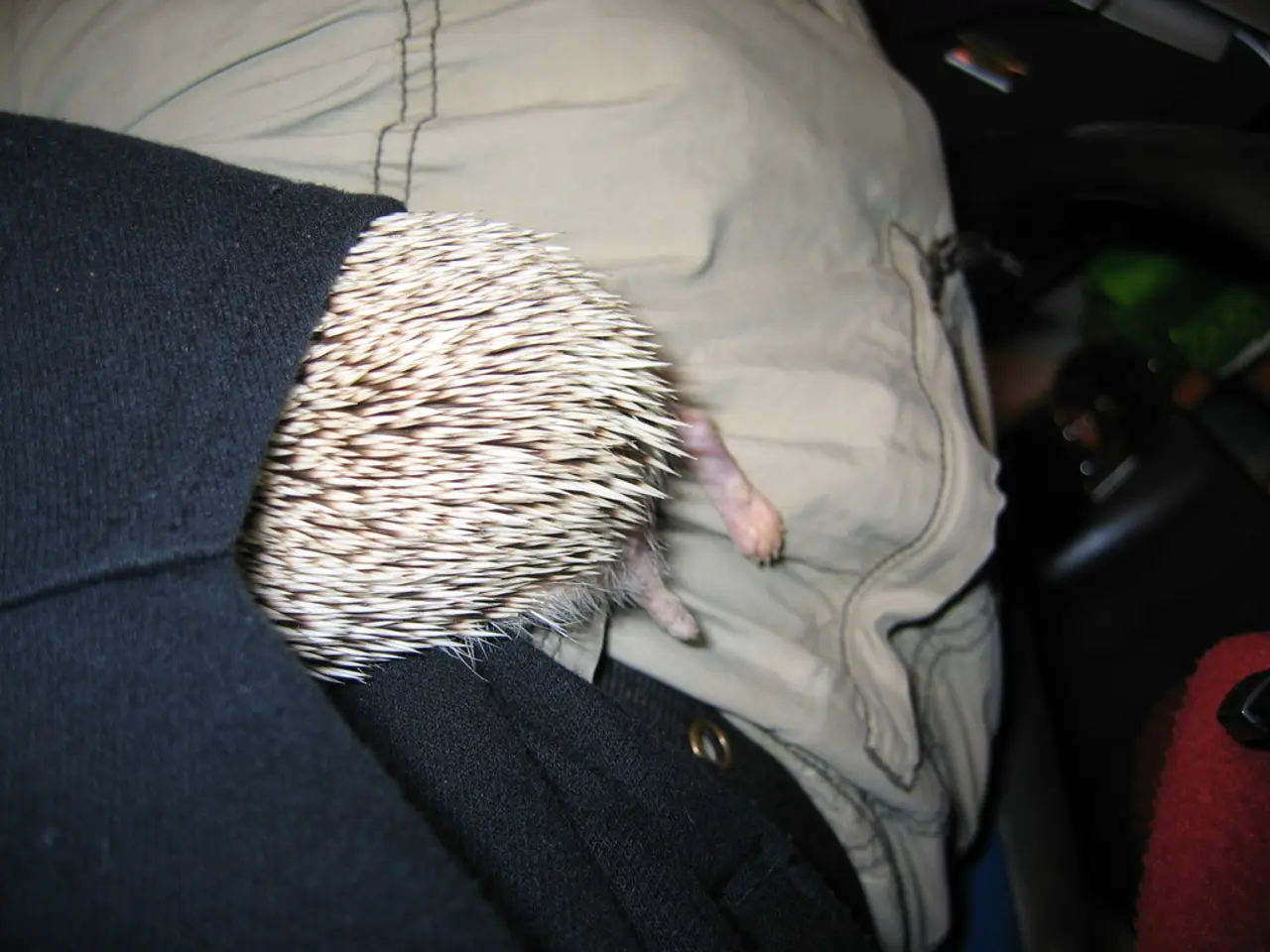Grassland Restoration in the Midwest: The Resurgence of Native Plants Revitalizes Local Ecological Systems
In the heart of the Midwest, a remarkable transformation is underway. Prairie restoration efforts are actively progressing, with significant positive impacts on local ecosystems and climate change mitigation.
Currently, restoration projects are integrating prairie ecosystems with innovative approaches such as prairie-voltaics, which combine solar power installations with native prairie plantings. This approach, demonstrated successfully in Minnesota, supports pollinators as effectively as dedicated conservation lands, while increasing native plant species and insect diversity. Soil health also improves under solar arrays compared to tilled land.
Various organisations, including The Nature Conservancy and researchers like Dr. Elizabeth Bach, are focusing on Tallgrass Prairie Restoration, emphasising long-term ecological and species diversity gains. However, the outcomes can be complex, influenced by environmental conditions and land management decisions. Extreme weather events sometimes challenge efforts, but native species like Sand dropseed and grassland birds like meadowlarks have shown resilience and recovery, highlighting the dynamic nature of restoration work.
Restored prairies foster biodiversity by enhancing habitats for native flora and fauna, including pollinators like bees and butterflies vital for crop pollination. This biodiversity boost has beneficial ripple effects on surrounding agricultural lands, potentially increasing crop yields. Prairie restorations also aim to rebuild essential grassland habitats in the Midwest, which are crucial for many species and help maintain ecological balance in the region.
Prairie restoration contributes to climate resilience by improving soil health, which enhances carbon sequestration in the soil. Healthier soils with higher organic content store more carbon, helping reduce atmospheric CO2 levels. The integration of prairie plants with solar energy infrastructure (prairie-voltaics) not only produces clean energy but also supports ecosystem services that help mitigate climate change impacts.
Seed collection has become both an art and a science, with collectors learning to identify the optimal timing for harvesting different species. Prairie restoration creates jobs in seed collection, site preparation, and maintenance, with the growing native seed industry providing new income opportunities for farmers and rural entrepreneurs.
However, the high cost of native seeds remains a barrier for many landowners, with some native seed mixes costing $200-500 per acre. Native prairie grasses are adaptable to unpredictable weather patterns, with deep root systems allowing them to access water during droughts and flexible stems that can bend without breaking in severe storms.
Fire is an essential tool for prairie maintenance, as native prairie plants evolved with fire and periodic burning helps remove accumulated dead plant material, recycles nutrients, and gives native species a competitive advantage over invasive plants and woody species.
The prairie restoration movement is a fundamental shift in how we think about land use and ecosystem management, demonstrating that productive, profitable landscapes can also provide essential ecosystem services. The future of prairie restoration in the Midwest is promising, with increasing support from government programs and private landowners recognising the economic and environmental benefits of native grasslands.
Modern prairie restoration is benefiting from advances in technology, including GPS-guided seeders, drone technology, and genetic research that helps identify the best local seed sources and understand how different plant populations are adapted to specific conditions. Research continues to improve restoration techniques and our understanding of prairie ecology, with scientists exploring how different management practices affect carbon sequestration, water quality, and biodiversity.
New partnerships between farmers, conservation organisations, and government agencies are creating innovative approaches to landscape-scale restoration that benefits both agriculture and wildlife. These efforts require patience and adaptive management but offer promising outcomes for regional ecosystems and climate resilience.
- In the heart of the Midwest, local ecosystems and climate change mitigation are positively impacted by ongoing prairie restoration efforts.
- Innovative approaches, such as prairie-voltaics, are being integrated into these restoration projects, supporting pollinators and increasing native plant species and insect diversity.
- Organisations like The Nature Conservancy and researchers such as Dr. Elizabeth Bach are focusing on Tallgrass Prairie Restoration, aiming for long-term ecological and species diversity gains.
- Restored prairies foster biodiversity, enhancing habitats for native flora and fauna, including pollinators vital for crop pollination.
- Prairie restoration also contributes to climate resilience by improving soil health, which enhances carbon sequestration and reduces atmospheric CO2 levels.
- Seed collection has become an art and a science, with the native seed industry providing new income opportunities for farmers and rural entrepreneurs.
- Fire is an essential tool for prairie maintenance, helping remove dead plant material, recycle nutrients, and giving native species a competitive advantage.
- New partnerships between farmers, conservation organisations, and government agencies are making landscape-scale restoration possible, benefiting both agriculture and wildlife, while offering promising outcomes for regional ecosystems and climate resilience.




